Enhanced Mechanical Properties and Surface Finish of PLA 3D Prints via Combined Heat Annealing and Powder Coating
Abstract
1. Introduction
1.1. Background on PLA in 3D Printing
1.2. Overview of Post-Processing Techniques
1.3. Rationale for Combining Heat Annealing and Powder Coating
1.4. Objectives of the Study
- To determine the optimal curing duration at 120 °C that yields the greatest mechanical improvement without causing deformation or loss of dimensional accuracy
- To evaluate surface appearance improvements through both subjective human assessment and optional objective roughness characterization.
- To compare the strength characteristics of treated and untreated specimens across multiple curing durations, identifying trends and thresholds of benefit.
- To propose a repeatable workflow that can be adopted for functional and aesthetic enhancement of PLA prints in design, engineering, and prototyping applications.
- The outcomes of this study are expected to provide a novel and practical contribution to post-processing strategies for FDM 3D printing, expanding the usability of PLA into domains traditionally limited by its material properties and appearance [13].
2. Materials and Methods
2.1. Materials Used
2.2. 3D Printing Parameters
2.2.1. 3D Printing Parameters
2.2.2. Specimen Geometry
2.2.3. Number of Specimens
2.3. Post-Processing Procedures
2.3.1. Powder Coating
2.3.2. Heat Annealing and Powder Coating Curing
2.3.3. Post-Processing Notes
2.4. Mechanical Testing Methods
Test Method
2.5. Failure Observation
2.6. Visual and Surface Analysis
3. Results
3.1. Mechanical Strength Comparison
3.2. Surface Quality Assessment
3.3. Optimal Processing Time Identification
4. Discussion
4.1. Interpretation of Results
4.1.1. Material Behavior Under Thermal Treatment
4.1.2. Synergistic Effect of Heat and Powder Coating
4.2. Comparison to Literature
4.3. Practical Implications—Business Models and Economic Perspectives
4.4. Limitations and Considerations
5. Conclusions
Author Contributions
Funding
Conflicts of Interest
References
- Li, H.; Mu, Y.; Wang, Q.; Cai, D.; Zhang, Y.; Luo, Y.; Liu, J.; Liu, J.; Niu, K.; Wu, Y.; et al. Interlayer enhancement of 3D printed CF/PLA composites via localized microwave welding and annealing-induced crystallization. Compos. Part B Eng. 2024, 284, 111737. [Google Scholar] [CrossRef]
- Ahn, S.-H.; Montero, M.; Odell, D.; Roundy, S.; Wright, P.K. Anisotropic material properties of fused deposition modeling ABS. Rapid Prototyp. J. 2002, 8, 248–257. [Google Scholar] [CrossRef]
- Popescu, D.; Zapciu, A.; Amza, C.; Baciu, F.; Marinescu, R. FDM process parameters influence over the mechanical properties of polymer specimens: A review. Polym. Test. 2018, 69, 157–166. [Google Scholar] [CrossRef]
- Tymrak, B.M.; Kreiger, M.; Pearce, J.M. Mechanical properties of components fabricated with open-source 3-D printers under realistic environmental conditions. Mater. Des. 2014, 58, 242–246. [Google Scholar] [CrossRef]
- Rodríguez-Panes, A.; Claver, J.; Camacho, A.M. The influence of manufacturing parameters on the mechanical behaviour of PLA and ABS pieces manufactured by FDM: A comparative analysis. Materials 2018, 11, 1333. [Google Scholar] [CrossRef] [PubMed]
- Ngo, T.D.; Kashani, A.; Imbalzano, G.; Nguyen, K.T.Q.; Hui, D. Additive manufacturing (3D printing): A review of materials, methods, applications and challenges. Compos. Part B Eng. 2018, 143, 172–196. [Google Scholar] [CrossRef]
- Chacón, J.M.; Caminero, M.A.; García-Plaza, E.; Núñez, P.J. Additive manufacturing of PLA structures using fused deposition modelling: Effect of process parameters on mechanical properties and their optimal selection. Mater. Des. 2017, 124, 143–157. [Google Scholar] [CrossRef]
- Hart, K.R.; Dunn, R.M.; Sietins, J.M.; Mock, C.M.H.; Mackay, M.E.; Wetzel, E.D. Increased fracture toughness of additively manufactured amorphous thermoplastics via thermal annealing. Polymer 2018, 144, 192–204. [Google Scholar] [CrossRef]
- Ravi-Kumar, S.; Lies, B.; Lyu, H.; Qin, H. Laser Ablation of Polymers: A Review. Procedia Manuf. 2019, 34, 316–327. [Google Scholar] [CrossRef]
- Scott Francis, Editor-in-Chief, Gardner Business Media, Exploring Powder Coating for Plastics, Composites and 3D-Printed Parts, Published 10/1/2024. Available online: https://www.pfonline.com/articles/exploring-powder-coating-for-composites-2 (accessed on 7 June 2025).
- Cerakote, vs. Powder Coating for 3D Printed Plastic Parts. Available online: https://www.tempus3d.com/post/cerakote-vs-powder-coating-for-3d-printed-plastic-parts (accessed on 7 June 2025).
- Wang, P.; Zou, B.; Ding, S.; Li, W.; Huang, C. Effects of annealing on the mechanical and thermal properties of polylactic acid parts fabricated by fused deposition modeling. Polymers 2019, 11, 1521. [Google Scholar]
- Žigon, J.; Grum, J.; Hribar, B.; Knez, M.; Knez, Ž.; Leskovšek, M.; Malavašič, T.; Možina, J.; Poberaj, I.; Rudolf, R.; et al. Surface Finishing of 3D-Printed Polymers with Selected Coatings. Polymers 2020, 12, 2797. [Google Scholar] [CrossRef]
- Kuo, C.-C.; Chen, H.-W.; Lin, P.-H.; Chen, W.-Z.; Wei, H.-Z.; Wei, J.-Y.; Huang, S.-H.; Tseng, S.-F. Process parameters optimization of rotary friction welding of polylactic acid-containing glass fiber and polylactic acid-containing carbon fiber using the Taguchi method. Int. J. Adv. Manuf. Technol. 2023, 129, 1817–1828. [Google Scholar] [CrossRef]
- Tiger PowderCoating Technical Sheet. Available online: https://www.tiger-coatings.com/us-en/blog/powder-coating-resins (accessed on 7 June 2025).
- Tiger PowderCoating Technical Sheet. Available online: https://www.tiger.archi/download-area/product-data-sheets?category=612948 (accessed on 7 June 2025).
- Creality Print, 3D Printing Software. Available online: https://www.creality.com/pages/creality-print-software (accessed on 7 June 2025).
- Liu, Z.; Wang, Y.; Wu, B.; Cui, J.; Zhang, M.; Zhou, Y. A critical review of fused deposition modeling 3D printing technology in manufacturing polylactic acid parts. Polymers 2019, 11, 598. [Google Scholar] [CrossRef]
- TIGER Coatings GmbH & Co. KG. TIGER Drylac® Series 14—Technical Data Sheet. Available online: https://www.tiger-coatings.com (accessed on 7 June 2025).
- Jia, F.; Jiang, L.; Deng, J.; Guo, W.; Wei, W.; Xu, X. Effect of powder coating curing conditions on surface quality and adhesion performance. Prog. Org. Coat. 2017, 112, 232–239. [Google Scholar] [CrossRef]
- Slusarczyk, C.; Bienias, J.; Dybowska-Sarapuk, L. The influence of low-temperature powder coating on the mechanical and aesthetic properties of thermoplastic surfaces. Surf. Coat. Technol. 2020, 384, 125271. [Google Scholar] [CrossRef]
- Mirabedini, M.; Kiamanesh, A. The effect of micro and nano-sized particles on the mechanical and adhesion properties of a clear polyester powder coating. Prog. Org. Coat. 2013, 76, 1401–1406. [Google Scholar] [CrossRef]
- Djukanović, M.; Damjanović, M.; Radunović, L.; Jovanović, M. Optimisation of PLA Filament Consumption for 3D Printing Using the Annealing Method in Home Environment. Stroj. Vestn. J. Mech. Eng. 2022, 68, 185–190. [Google Scholar] [CrossRef]
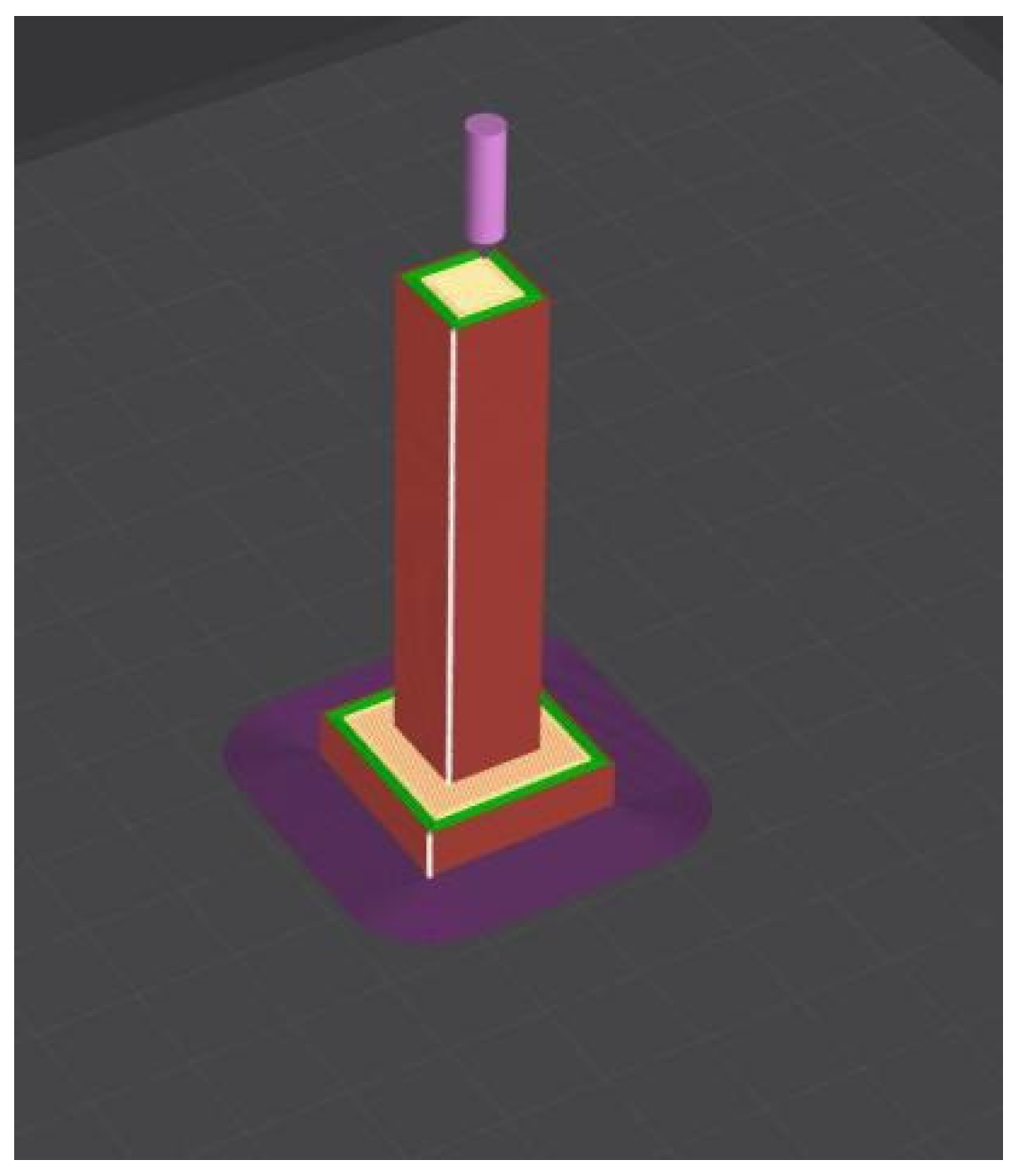
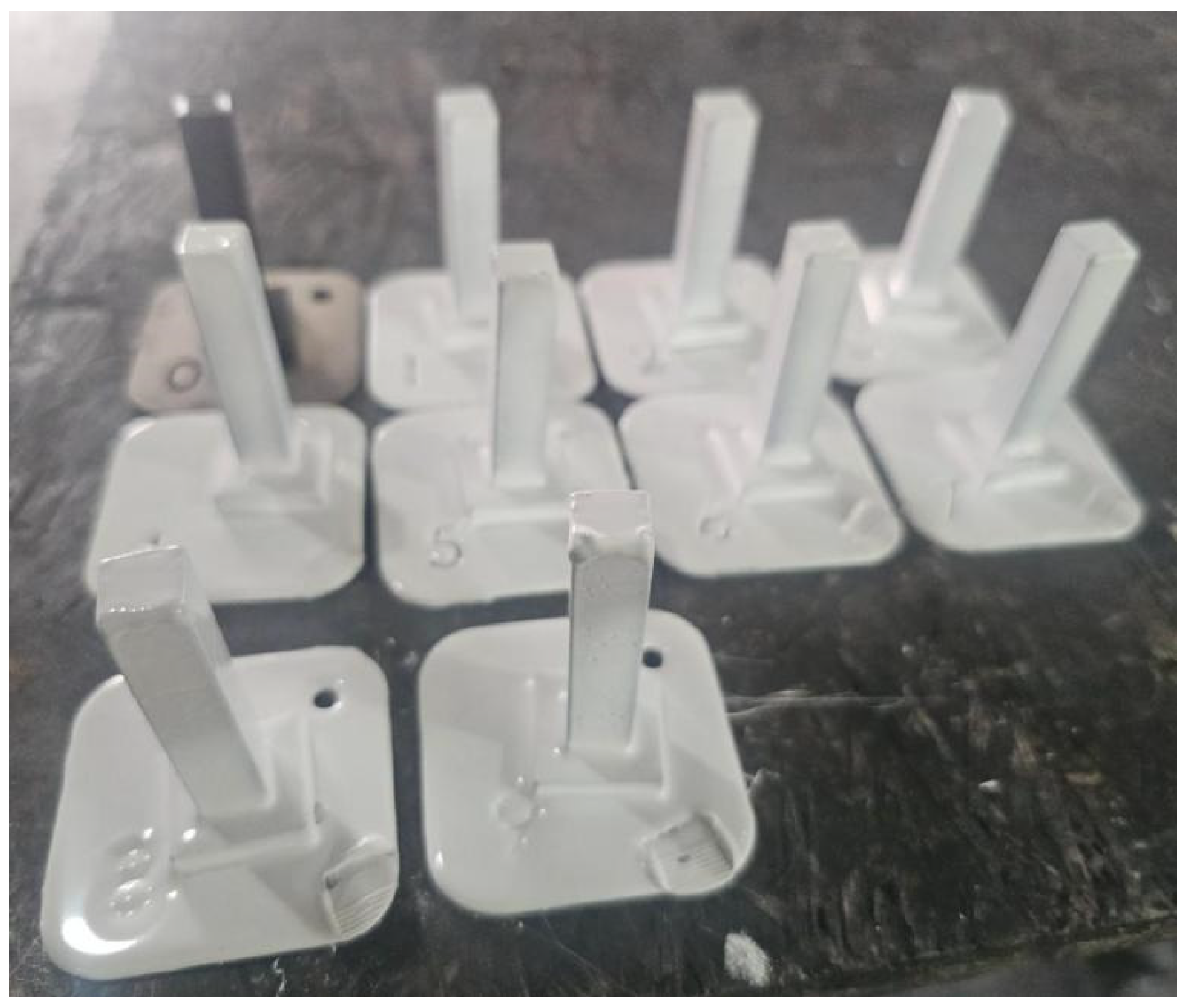

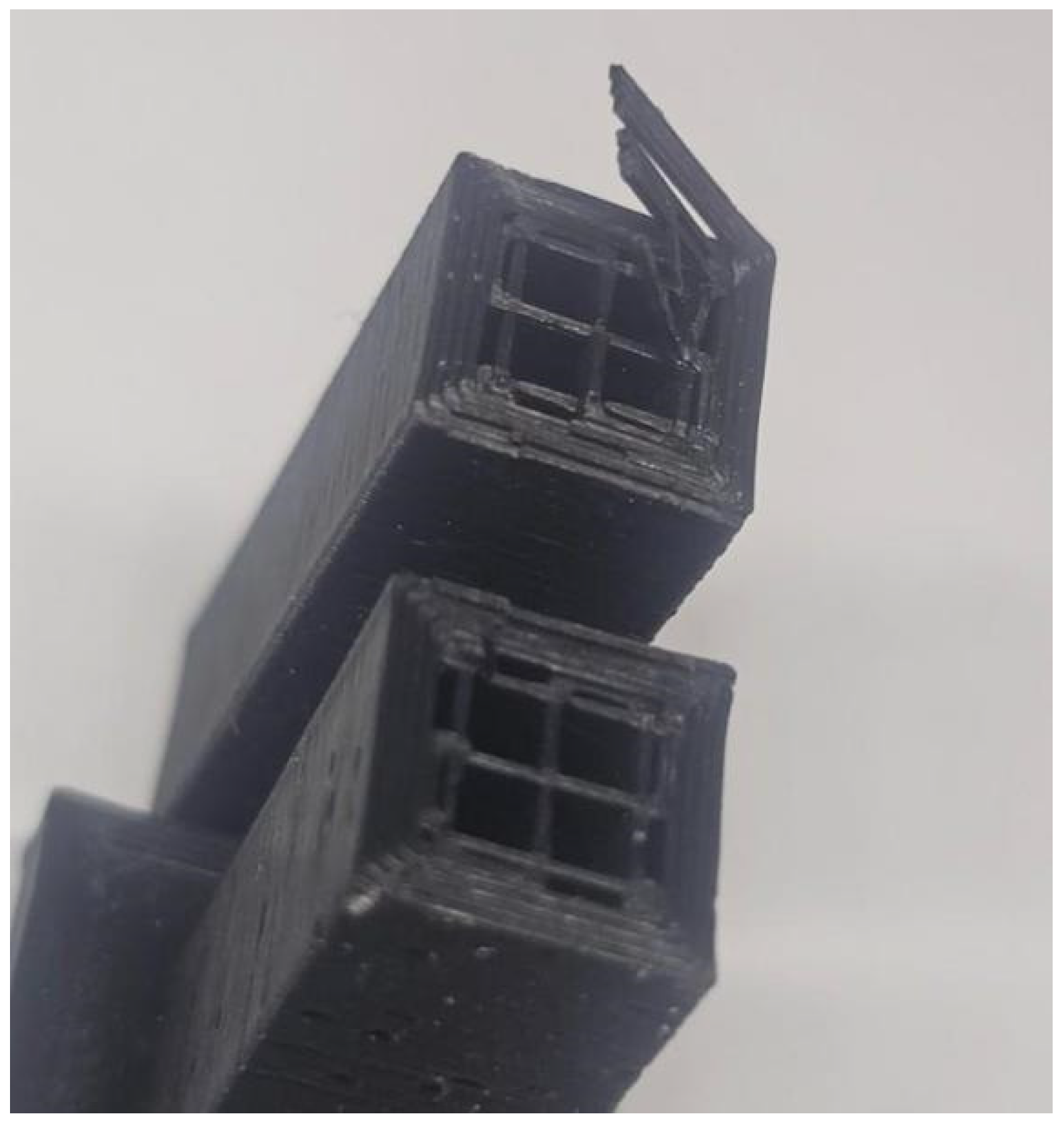

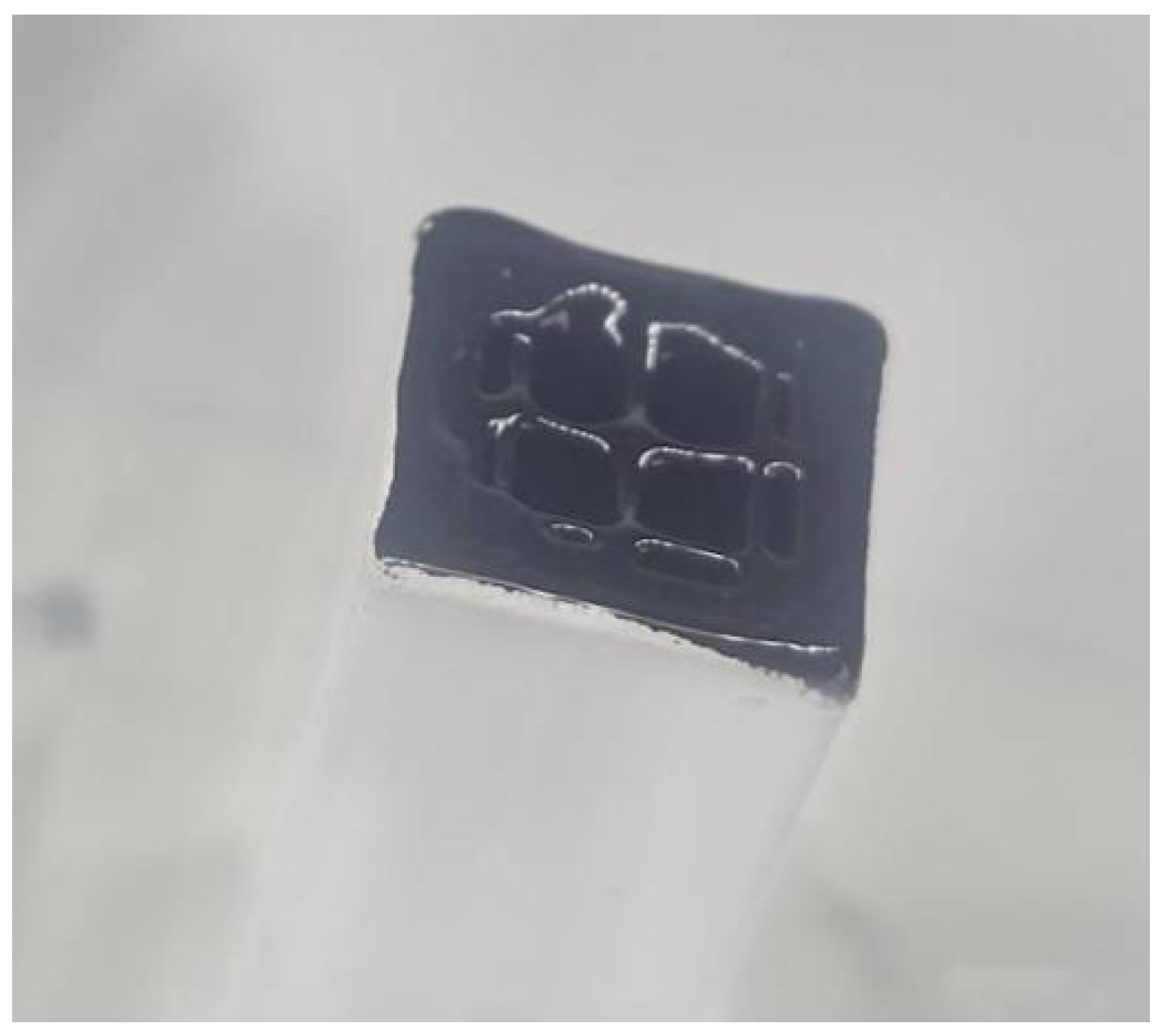
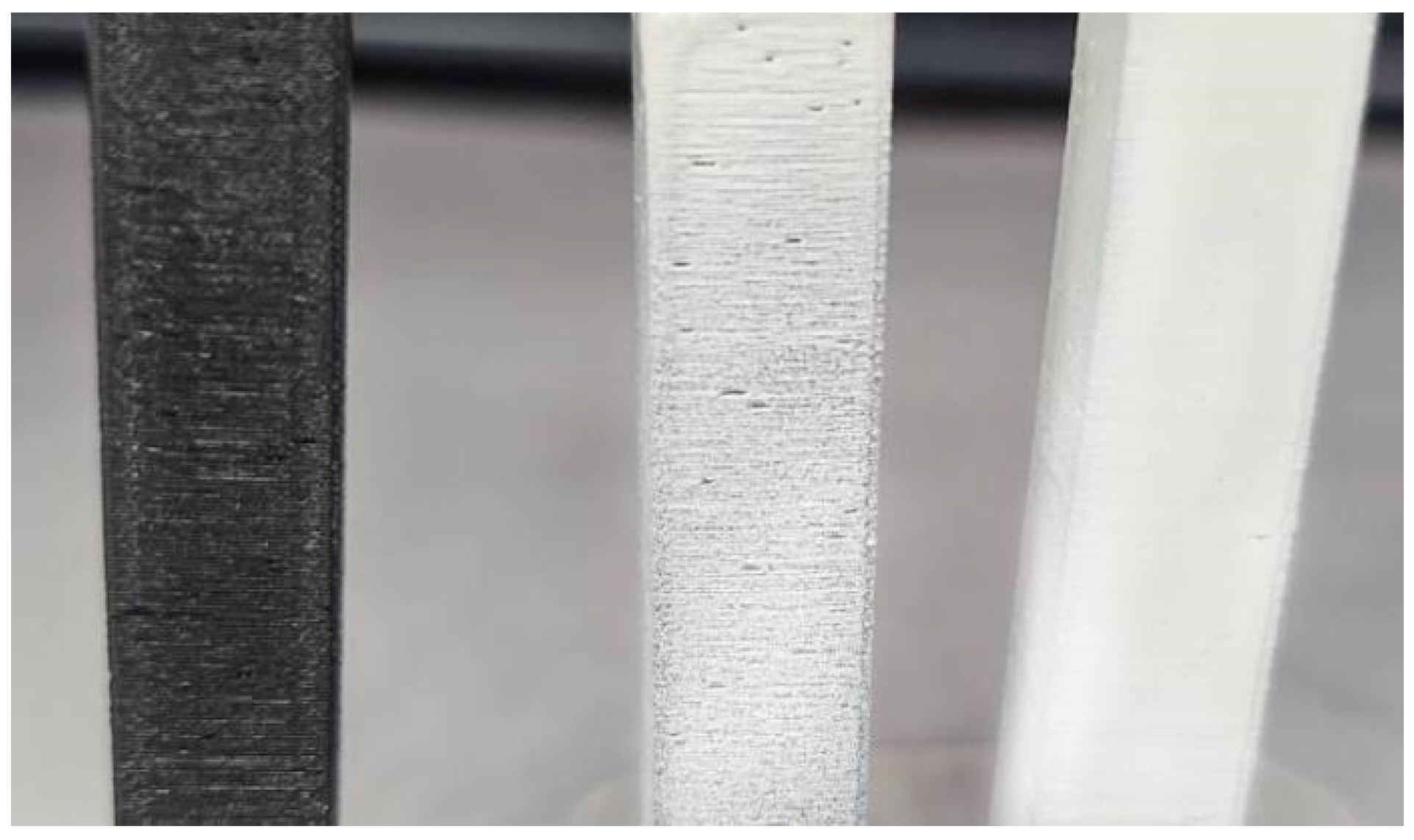


Disclaimer/Publisher’s Note: The statements, opinions and data contained in all publications are solely those of the individual author(s) and contributor(s) and not of MDPI and/or the editor(s). MDPI and/or the editor(s) disclaim responsibility for any injury to people or property resulting from any ideas, methods, instructions or products referred to in the content. |
© 2025 by the authors. Licensee MDPI, Basel, Switzerland. This article is an open access article distributed under the terms and conditions of the Creative Commons Attribution (CC BY) license (https://creativecommons.org/licenses/by/4.0/).
Share and Cite
Jovanović, J.; Đukanović, M.; Radunović, L.; Vuković, S.R.; Jovanović, M. Enhanced Mechanical Properties and Surface Finish of PLA 3D Prints via Combined Heat Annealing and Powder Coating. Appl. Sci. 2025, 15, 9338. https://doi.org/10.3390/app15179338
Jovanović J, Đukanović M, Radunović L, Vuković SR, Jovanović M. Enhanced Mechanical Properties and Surface Finish of PLA 3D Prints via Combined Heat Annealing and Powder Coating. Applied Sciences. 2025; 15(17):9338. https://doi.org/10.3390/app15179338
Chicago/Turabian StyleJovanović, Jovana, Milena Đukanović, Luka Radunović, Sunčica Rogić Vuković, and Mihailo Jovanović. 2025. "Enhanced Mechanical Properties and Surface Finish of PLA 3D Prints via Combined Heat Annealing and Powder Coating" Applied Sciences 15, no. 17: 9338. https://doi.org/10.3390/app15179338
APA StyleJovanović, J., Đukanović, M., Radunović, L., Vuković, S. R., & Jovanović, M. (2025). Enhanced Mechanical Properties and Surface Finish of PLA 3D Prints via Combined Heat Annealing and Powder Coating. Applied Sciences, 15(17), 9338. https://doi.org/10.3390/app15179338






